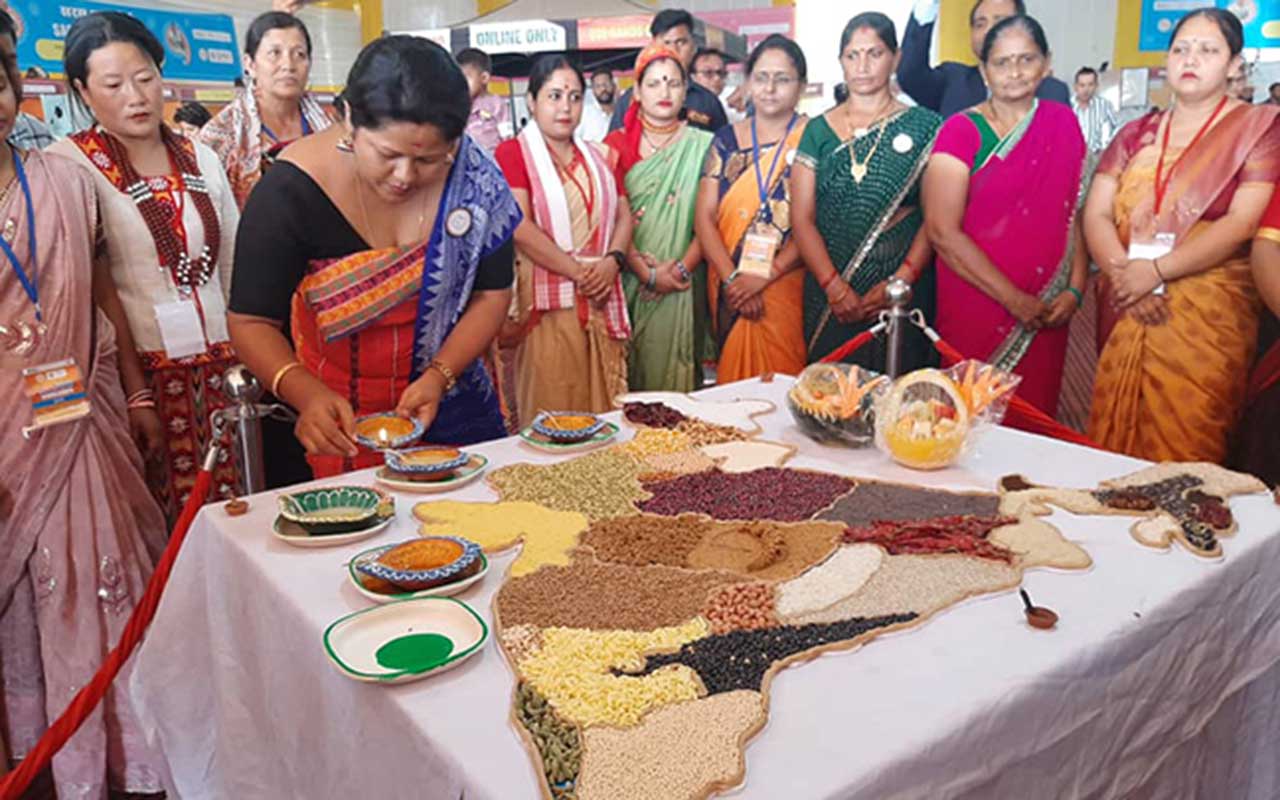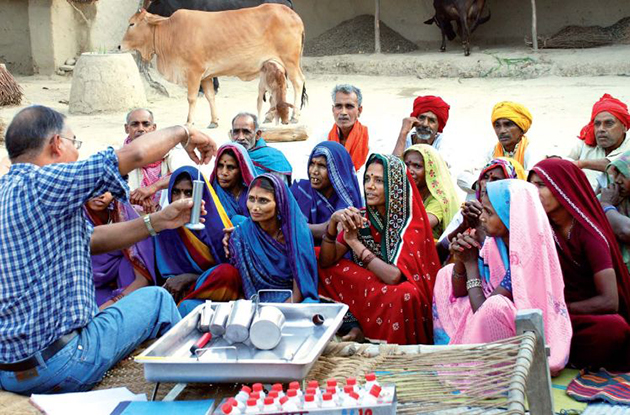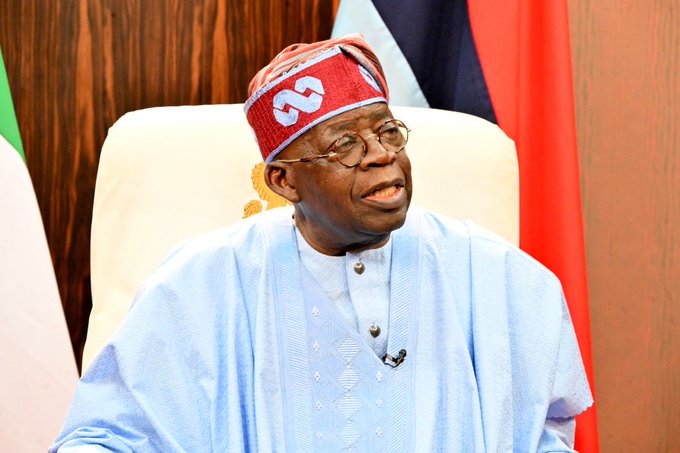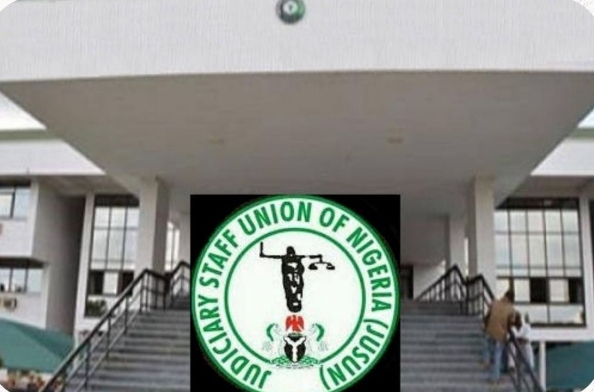 Indian Prime Minister, Narendra Modi, is scheduled to visit Nigeria this month as part of efforts aimed at strengthening ties with the Global South. Top on the agenda is the push for more collaborations to diminish poverty and human misery in third-world countries, constituting about 80 per cent of the global population. Indeed, a recent tour of the Asian country saw a unique Indian model of self-help entrepreneurship, not only leapfrogging the national economy, but also propelling the erstwhile poverty capital of the world to a respectable place among the superpowers, and a potential inspiration for the likes of Nigeria, WOLE OYEBADE who was in India, reports.
Indian Prime Minister, Narendra Modi, is scheduled to visit Nigeria this month as part of efforts aimed at strengthening ties with the Global South. Top on the agenda is the push for more collaborations to diminish poverty and human misery in third-world countries, constituting about 80 per cent of the global population. Indeed, a recent tour of the Asian country saw a unique Indian model of self-help entrepreneurship, not only leapfrogging the national economy, but also propelling the erstwhile poverty capital of the world to a respectable place among the superpowers, and a potential inspiration for the likes of Nigeria, WOLE OYEBADE who was in India, reports.
Bundelkhand is a traditional chokehold for endemic poverty. The region, situated in the mountain range in Central and North India, spreads across Uttar Pradesh and Madhya Pradesh states. The region is synonymous with its dry land, recurring droughts, poverty, and migration.
Despite its large population, barely anything survives in the region, except its small-scale traditional cattle rearing.
In 2019, the State Rural Livelihood Mission established a Balinee Milk Producer Company, with the sole objective of ending poverty in that rural region.
“It sounds too good to be true, but we are happy to see the company. We started believing them,” a resident, Keerti said.
The region was a core rural setting with almost zero literacy rate. However, the facilitators had a clear objective and a game plan. With support from the National Daily Development Board Dairy Services, the objective was to form a cooperative group of women producers of milk, the economic mainstay of the region, and safeguard their interest by providing round-the-year access to organised market, timely payment, and livestock support services to increase milk production.
The Guardian learnt that about 9,000 members were registered with the company in the first year, and within six years, the membership reached 71,000, supplying more than 270,000 litres of milk per day.
It wasn’t a coincidence. According to the Joint Secretary, Ministry of Rural Development, India, Smriti Sharan, the company invested heavily in training and capacity building of the women producers, employees, and board of directors of the company, which has enabled the women-led business enterprise to run and grow smoothly.
Sharan explained that while the producers are trained on aspects of awareness of the dairy sector, milk production, productivity, and quality milking, the employees are unskilled in operations, maintenance, quality packaging, marketing, and so on. The Board of Directors is also continuously trained on the business and governance strategy.
In about six years, community-owned Balinee has turned over an estimated $156 million (Rs 1300 crore).
Keerti recently told The Guardian: “Our company has put in place an efficient system of milk procurement. It has created Milk Pooling Points and storage centres, one for each 60-70 pooling points. The procurement system has been automated, with machines extracting the milk instead of the manual process.

“There is no reason for any woman to be poor in Bundelkhand. Balinee has brought multiple impacts on the lives of the women’s self-help group members. I can tell you that the increased participation of women in dairying activities, has reduced migration for livelihoods, recorded a boost in the rural economy with multiple opportunities for sahayaks, artificial insemination technicians, employment at chilling centres, competitive milk prices, elimination of intermediaries, round-the-year availability of input services and market access,” Keerti said.
A self-help model of national importance
THE grass-to-grace story of residents of Bundelkhand is not unique to the region. It is a snippet of the success stories of the Deendayal Antyodaya Yojana-National Rural Livelihood Mission (DAY-NRLM) that started in 2011, and now has a presence in 742 districts across India.
DAY-NRLM’s mission is to reduce poverty by enabling poor households to access gainful self-employment and skilled wage employment opportunities. The end goal is an appreciable improvement in their livelihoods on a sustainable basis, through building strong grassroots institutions for the poor.
Additional Secretary, Ministry of Rural Development, India, Charanjit Singh, noted that the DAY-NRLM aims to alleviate poverty by promoting sustainable livelihoods for the rural poor. The zero-to-40 months life-change initiative mobilises rural women into Self-Help Groups (SHGs) and provides a robust institutional platform for access to credit, skills development, economic opportunities through livelihoods, and market linkages.
Specifically, the mission encourages women to form groups of 10 to 20 members each. They start with meetings that promote collective savings and lending (the government supports the have-nots); next is to open a joint account in the second month- promoting financial inclusion. The third to fourth month brings support in the form of a revolving support fund from the government, where bigger credits are accessed for various businesses and expansion in bank credit linkages. En route to the 40-month destination are benefits of financial literacy, health insurance, and pension, digital and enterprise financing for enrollees.
Through collective effort, the mission has mobilised more than 100 million women, across 742 districts, into 9.1 million SHGs and successes in establishing bank linkages of more than $114 billion. The capitalisation support is to the tune of $5.7 billion, across 47,068 credit units.
Asked why the mission is focused on women alone, the additional secretary said: “Our motto is strong women, prosperous India.”
On a tour of the Saras Aajeevika Mela (a trade fair of handmade wares made by about 900 SHG rural women artisans from 30 states), held in Gurujam, Gujarat State, Singh said: “We recognise the need to engage women to lift their families out of poverty. The initiative is not just for social inclusion and mobilisation of women, but also for households’ support. More so, the women have proven to be more trustworthy and disciplined in handling finances, and repaying loans.
“If the nation wants to be a leading country in the world, over 50 per cent of the population must be able to contribute to the economy, and that is what the initiative is all about,” Singh said.
Through the scheme, the government of India is also building new sets of entrepreneurs called Lakhpati Didis. A Lakhpati Didi is a self-help group member who earns a yearly household income of Rupees One Lakh (or $1205) or more. This income is calculated for at least four agricultural seasons or business cycles.
Under the additional initiative, each potential household is facilitated to take up multiple livelihood activities across farm and non-farm sectors. Necessary enablers such as access to livelihood assets, adequate and timely support for finance, market, technology, and so on, are supported by the government, by facilitating convergence across various government departments, ministries, private sector, and market players.
The Prime Minister, Narendra Modi, during the 77th Independence Day speech, set the vision for enabling 20 million Lakhpati Didis. In the financial year 2024-25, the target has increased to 30 million beneficiaries.
Incredible India!
WHILE India’s 1.4 billion population is one of the fastest growing economies in the world, it is also adjudged one of the most unequal societies, even though it is fast-changing that narrative.
According to Oxfam, inequality has been rising sharply for the last three decades, alleging that the richest have cornered a huge part of the wealth created through crony capitalism and inheritance.
Oxfam recorded that the top 10 per cent of the Indian population holds 77 per cent of the total national wealth. A total of 73 per cent of the wealth generated in 2017 went to the richest one per cent, while 670 million Indians, who comprise the poorest half of the population saw only a one per cent increase in their wealth.
There are 119 billionaires in India. That number increased from only nine in 2000 to 101 in 2017. Between 2018 and 2022, India is estimated to have produced 70 new millionaires every day. However many ordinary Indians are not able to access the health care that they need. About 63 million of them are pushed into poverty because of healthcare costs every year- almost two people every second.
But India is fast pushing the boundary, leveraging mass entrepreneurship and creating self-help prosperity, to narrow inequality at home and even abroad, in its race to become the new economic powerhouse and a superpower.
Already, the second largest country in the world, after China, India has achieved all-round socio-economic progress in its 77 years of independence from British rule. It has become self-sufficient in agricultural production and is now one of the top industrialised countries in the world. It has achieved its target of 40 per cent installed electric capacity from non-fossil fuels ahead of 2023. Though an ultra-conservative epicentre of culture and heritage, it is one of the few countries that are exploring most of science and technology, with adventures into outer space to conquer nature for the benefit of the people.
All of those are made possible by ongoing exploits in resilient infrastructure projects, investment in education, and grand facilities like the Science City; National Institute of Design; India Institute of Management, and the Coalition for Disaster Resilient Infrastructure (CDRI).
India is expanding at a yearly rate of six per cent. Currently the fifth-largest economy in the world, it is on the way to ranking third by 2027 – after the United States and China.
A pillar of its development drive is the programme of infrastructure that knits together a vast single market. India’s aviation industry has experienced significant growth in the past 10 years, doubling its 74 active airports in 2014 to 157 in 2024, and the aim is to increase this number to 350 by 2047. It is also building 10,000km of roads and 15GW of solar-energy capacity yearly.
Another pillar is Indian global trade services, measuring up to 10 per cent of its Gross Domestic Product (GDP). Global trade in services is still growing and Indian firms have marketed “global capacity centres” – hubs that sell multinational Research and Development (R&D) and services such as law and accounting.
It partly explains its new type of welfare system in which hundreds of millions of poor Indians in rural regions like Bundelkhand can receive instant digital transfer payments for the quantity and quality of milk submitted.
Prof. Abhiman Das of the India Institute of Management, India, told The Guardian that India has crawled its way to the top of the global technology hub. “For instance, we have a payment platform that successfully hosts 500 million transactions in just one day. It will reach a billion soon. A large number of developments are ongoing here and are mostly driven by technology. Indian techies are controlling technologies all over the world,” Das said.

New data measuring the global poverty rate suggests the share of the population living on less than $2.15 a day has fallen below five per cent from 12 per cent in 2011.
Superpower: Towards a seat at the table
HAVING significantly won at home by deepening its political, economic, and military capabilities, India is playing more active roles in international geopolitics, with the Global South as its primary focus.
Special Secretary of Economic Relation & Development Partnership Administration, Periasamy Kumaran, noted that the Global South represents not just geography, but shared historical experiences in colonialism, struggles for independence, economic exploitation, and a lack of representation in global governance.
More so, the countries, including Nigeria, collectively face new challenges like the lingering effects of the COVID-19 pandemic, climate change, geopolitical upheavals, and the widening digital divide. These add to burdens in achieving the Sustainable Development Goals (SDGs).
Indeed, the Global South comprises 85 per cent of the world’s population, and “our development needs must be central to the global governance agenda,” Kumaran said.
He added: “India envisions a common future with the Global South. Our G20 Presidency in 2023 allowed us to elevate the concerns of developing countries, leading to the inclusion of the African Union as a permanent member of the G20.
“The Voice of the Global South Summit further strengthened this dialogue. In its third edition this year, under the theme: ‘An Empowered Global South for a Sustainable Future,’ leaders from 123 countries discussed a range of issues, including the deployment of digital public infrastructure (DPI) to accelerate SDGs beyond 2030.”
India’s foreign policy towards Africa is based on four pillars, development partnership and capacity building, trade and investment, strong people-to-people ties, and defence and maritime security.
“Our priorities are guided by the principles of non-interference and mutual respect. We have held three editions of the India Africa Forum Summit (IAFS), with the last one being in 2015, with 41 African HOS/HOGs. India and Africa share a multifaceted economic relationship, with India being the fourth-largest trading partner and the fifth-largest investor for Africa. Our trade with Africa is touching $100 billion and our cumulative investments in Africa are over $75 billion,” the special secretary said.
The project portfolio encompasses roads and bridges, railways, ports, inland waterways, power stations and transmission lines, IT and telecommunication infrastructure, and upgrading border-related infrastructure to enable a smoother flow of goods and passengers. In addition, India has also undertaken several projects in healthcare, education, capacity-building, agriculture, and digital public infrastructure.
Africa’s share is about $12 billion spread over 42 countries. No fewer than 336 developmental projects have been taken up so far. Out of these, 208 projects have already been completed. About 85 projects are currently under execution and the remaining projects are in various preparatory stages.
Some of the iconic assets built in Africa under this modality include the Parliament Building in Gambia; the Presidential Palace in Ghana; the Kosti Power project in Sudan, which provides one-third of the country’s power; Upper Ruvu Water Treatment Plant in Tanzania, and several “first-ever” industrial units, such as the first cement plant in Djibouti, the first milk processing plant in Mauritania, and the first sugar factory in Ghana.
“India believes that the Global South has to be a much larger and more vocal participant in finding solutions to intractable global issues. We have to join hands to pursue comprehensive reform of the international governance institutions and the international financial architecture, including the United Nations Security Council (UNSC), International Monetary Fund (IMF), and the World Bank, to promote greater representation from countries of the Global South and effectively empower them to achieve SDGs,” Kumaran said.
Indeed, India has proven to be a breath of fresh air in global geopolitics, especially in the face of the conflicts between the East and West. Besides rallying the Global South to the win-win alliance and making August visits, India is a model of inspiration for Nigeria and others angling to earn a place at the table of the superpowers.
Despite the difference in population density, Nigeria currently has more poor people than India. The World Poverty Clock, which keeps real-time tabs on the poverty rate, reported that about 70,834,207 out of a population of 225,731,260 Nigerians were battling extreme poverty.
India didn’t slow the poverty rate through palliatives or poorly digested foreign policies, it did through research-backed homegrown initiatives that are built to last, lifting the people out of poverty to strengthen the economy. India has demonstrated that a third-world country can look inward to reach for the stars without forgetting its roots.





